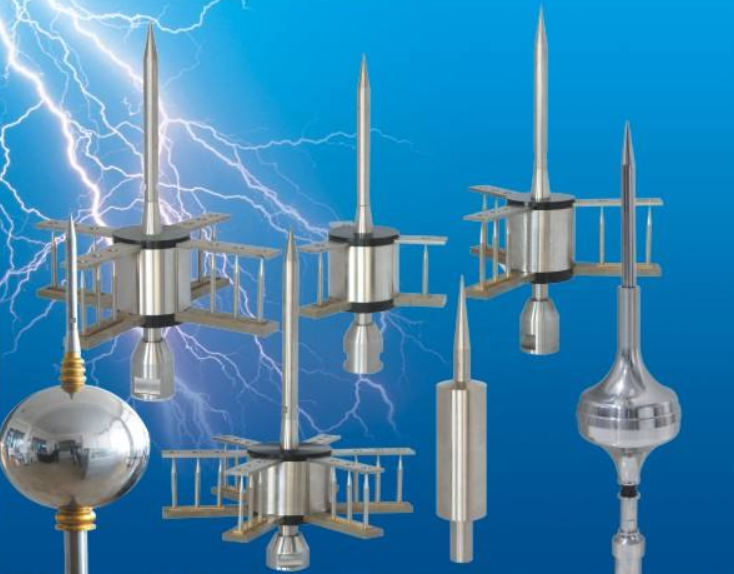Product Details Support the development of various lightning rods
A lightning rod, also known as a lightning conductor or lightning protection system, is a device designed to protect structures and objects from the destructive effects of lightning strikes. It provides a preferred path for lightning to follow, diverting the electrical energy safely to the ground, thereby minimizing the risk of damage, fire, and injury.
Here are the key aspects of lightning rods:
-
Purpose and Function: The primary purpose of a lightning rod is to provide a low-resistance path for lightning to follow. When a lightning discharge occurs, the rod intercepts the lightning strike and conducts the electrical current through a conductive path, typically in the form of a metal conductor or cable. This path leads the electrical energy safely to the ground, where it is dispersed harmlessly.
-
Components: A typical lightning rod system consists of several components. These include the lightning rod itself, which is a pointed metal rod mounted at the highest point of a structure. It is connected to a conductor, such as a copper or aluminum cable, which is routed down the structure and connected to a grounding system. The grounding system provides a safe path for the lightning current to be dissipated into the ground.
-
Installation: Lightning rods are strategically installed on structures to maximize their effectiveness. The rod should be positioned at the highest point of the structure, such as the roof or the top of a mast, to increase the likelihood of intercepting a lightning strike. The conductor is then installed along the structure, following a path that minimizes sharp bends and provides a continuous conductive route. The grounding system is typically comprised of metal rods or plates buried deep in the ground to ensure proper dissipation of the lightning current.
-
Effectiveness: Lightning rods are highly effective in protecting structures by providing a controlled path for lightning discharges. When a lightning strike occurs, the rod helps prevent the lightning from directly striking and causing damage to the structure. Instead, the lightning follows the path of least resistance provided by the lightning rod and conductor, reducing the risk of fire, structural damage, and electrical surges.
-
Compliance and Maintenance: Lightning rod systems should be installed and maintained in accordance with local regulations and industry standards. Regular inspections and maintenance are necessary to ensure the system remains in good working condition. This may include checking for corrosion or damage to the rod and conductor, ensuring proper grounding, and verifying the integrity of the system.
It's important to note that while lightning rods provide effective protection, they do not prevent lightning strikes. Instead, they mitigate the potential damage by redirecting the lightning current away from vulnerable structures and objects. Lightning rods are commonly used on buildings, towers, bridges, and other tall structures where the risk of lightning strikes is high, helping to safeguard lives and property during thunderstorms.

 English
English  Español
Español  Português
Português  русский
русский  français
français  日本語
日本語  Deutsch
Deutsch  Tiếng Việt
Tiếng Việt  Italiano
Italiano  Nederlands
Nederlands  ไทย
ไทย  Polski
Polski  한국어
한국어  Svenska
Svenska  magyar
magyar  Malay
Malay  বাংলা
বাংলা  Dansk
Dansk  Suomi
Suomi  हिन्दी
हिन्दी  Pilipino
Pilipino  Türk
Türk  Gaeilge
Gaeilge  عربى
عربى  norsk
norsk  اردو
اردو  čeština
čeština  Ελληνικά
Ελληνικά  Українська
Українська  Javanese
Javanese  فارسی
فارسی  தமிழ்
தமிழ்  తెలుగు
తెలుగు  नेपाली
नेपाली  Burmese
Burmese  ລາວ
ລາວ  Қазақ
Қазақ  Euskal
Euskal  slovenský
slovenský  Македонски
Македонски  Română
Română  Српски
Српски  简体中文
简体中文  Afrikaans
Afrikaans  עִברִית
עִברִית  יידיש
יידיש  Беларус
Беларус  മലയാളം
മലയാളം  Hawaiian
Hawaiian  հայերեն
հայերեն 












